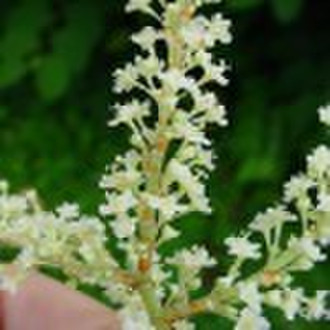Каталог
-
Каталог
- Автомобили и мотоциклы
- Безопасность и защита
- Бизнес
- Бытовая техника
- Бытовая электроника
- Детали машин и услуги по их изготовлению
- Дом и Сад
- Здоровье и медицина
- Игрушки и хобби
- Изделия из металла
- Измерительные и анализирующие приборы и инструменты
- Инструмент
- Красота и личная гигиена
- Мебель
- Мероприятия по охране окружающей среды
- Минералы и металлургия
- Модные аксессуары
- Обувь и аксессуары
- Одежда
- Освещение
- Подарки, сувениры
- Продовольственные товары и напитки
- Промышленное оборудование и техника
- Резина и пластмассы
- Сельское хозяйство
- Специальное оборудование
- Спорт, отдых и досуг
- Сток
- Строительство и недвижимость
- Текстиль и кожа
- Телекоммуникации
- Товары для офиса, учебы. Канцтовары
- Транспорт
- Упаковка и печать
- Химикаты
- Часы, Украшения, Очки
- Чемоданы, сумки
- Электронные компоненты, оборудование, принадлежности
- Электротехническое оборудование и принадлежности
- Энергия
Filters
Search

Ресвератрол 50%
ориг. цена: 120,00 USD
Гуанчжоу, Китай
Объем производства:
2000 Килограмм / Месяц
Гуанчжоу, Китай
86-20-32067089

Robert Lo
Контактное лицо
Основные данные
| Вид | Растительные экстракты |
|---|---|
| Форма | Порошок |
| Тип экстракции | Жидко-твердая экстракция |
| Упаковка | Drum |
| Место происхождения | Guangdong China (Mainland) |
| Стандарт | Top grade |
| Бренд | Honsea |
Resveratrol Latin Name: Polygonum cuspidatum Sieb. et Zucc. Active Ingredient: Resveratrol 50%by HPLC. trans-resveratrol,5-[(E)-2-(4-hydroxyphenyl)ethenyl]benzene-1,3-diol MW: 228.243 | MF: C14H12O3 CAS No.: 501-36-0 Active Ingredient:Resveratroll. Appearance: White powder. Specification: Resveratroll 50% ,98%. Resveratrol is an active component extracted from Huzhang (Polygonum cuspidatum) in China. It is an antioxidant phenol and potent vasodilator that inhibits serum trilyceride synthesis, lipid peroxidation, and platelet aggregation. It is extensively used for treatment of blood vessel diseases such as atherosclerosis and hyperlipidmia. In addition, is has antivirus and anti-inflammatory activity, can treat acute microbial infections and viral hepatitis, etc. Pharmacological Action Where is it found? Resveratrol was originally isolated by Takaoka from the roots of white hellebore in 1940, and later, in 1963, from the roots of Japanese knotweed. However, it attracted wider attention only in 1992, when its presence in wine was suggested as the explanation for cardioprotective effects of wine.[1] resveratrol's most abundant natural sources are Vitis vinifera, labrusca, and muscadine grapes, which are used to make wines. It occurs in the vines, roots, seeds, and stalks, but its highest concentration is in the skin [2] Resveratrol is a phytoalexin produced naturally by several plants when under attack by pathogens such as bacteria or fungi. Resveratrol has also been produced by chemical synthesis[2], and is sold as a nutritional supplement derived primarily from Japanese knotweed. Resveratrol is a phytoalexin, a class of antibiotic compounds produced as a part of a plant's defense system against disease [2]. For example, in response to an invading fungus, resveratrol is synthesized from p-coumaroyl CoA and malonyl CoA [3]. Physiological effects Several studies have demonstrated that resveratrol is an effective antioxidant [4-7]. It inhibits lipid peroxidation of low-density lipoprotein (LDL) [4,5], prevents the cytotoxicity of oxidized LDL [4], and protects cells against lipid peroxidation [4]. It is thought that because it contains highly hydrophilic and lipophilic properties, it can provide more effective protection than other well-known antioxidants, such as vitamins C and E [4]. The groups of Howitz and Sinclair reported in 2003 in the journal Nature that resveratrol ignificantly extends the lifespan of the yeast Saccharomyces cerevisiae.[8] Later studies conducted by Sinclair showed that resveratrol also prolongs the lifespan of the worm aenorhabditis elegans and the fruit fly Drosophila melanogaster.[9] In 2007 a different group of researchers was able to reproduce the Sinclair's results with C. elegans[10] In 1997 Jang reported that topical resveratrol applications prevented the skin cancer development in mice treated with a carcinogen.[11] There have since been dozens of studies of the anti-cancer activity of resveratrol in animal models[12] but no results of human clinical trials for cancer have been reported.[13] In vitro resveratrol interacts with multiple molecular targets, and has positive effects on the cells of breast, skin, gastric, colon, esophageal, prostate, and pancreatic cancer, and leukemia.[12] How much is usually taken? An 8-ounce glass of red wine provides approximately 640 mcg of resveratrol, while a handful of peanuts provides about 73 mcg of resveratrol. Resveratrol supplements (often found in combination with grape extracts or other ) are generally taken in the amount of 200-600 mcg per day. This is far less than the amount used in animal studies to prevent : equivalent to more than 500 mg (500,000 mcg) per day for an average-sized human. Therefore, one should not assume that the small amounts found in supplements or food would necessarily be protective. The optimal level of intake is not known.
Условия поставки и упаковка
Packaging Detail: Drum Delivery Detail: 7days after T/T
Порт: anywhere
Условия оплаты
Электронный перевод
-
Способы оплаты
Для оплаты товаров и услуг на нашем портале, Вы всегда получаете счет, в котором Вам необходимо самостоятельно указать свои данные.
Мы принимаем к оплате:








